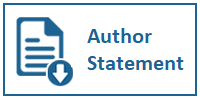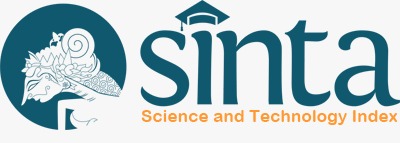Comparison of Cosine Similarity, Rabin-Karp, and Levenshtein Distance Algorithms for Plagiarism Detection in Document
DOI:
https://doi.org/10.31937/ti.v17i1.3867Abstract
Prevention and detection of plagiarism are crucial. There are several algorithms that can be used to detect plagiarism in documents, including the Cosine Similarity, Rabin-Karp, Levenshtein Distance, Hamming Distance, Euclidean Distance, Edit Distance, Ratcliff/Obershelp, etc. Based on the literature review from previous research, three best algorithms were identified: Cosine Similarity, Rabin-Karp, and Levenshtein Distance. However, there has been no study analyzing the comparison of these three algorithms. Therefore, this study will compare the performance of each algorithm and determine the best algorithm for plagiarism detection in documents based on similarity scores and execution time. The research objects use a sample of documents consisting of titles and abstracts from Indonesian-language informatics journals. Cosine Similarity algorithm is superior to others for plagiarism detection in documents, as it produces the highest average similarity score with a relatively fast execution time. The similarity values of Cosine Similarity, Rabin-Karp with 4 k-grams, and Levenshtein Distance are 48.80%, 47.13%, 20.61%, respectively. The average execution time of Cosine Similarity, Rabin-Karp with 4 k-grams, and Levenshtein Distance are 0.22 s, 0.45 s, and 39.15 s, respectively
Downloads
Additional Files
Published
How to Cite
Issue
Section
License
Copyright (c) 2025 Jasman Pardede, Agil Yudistira, Agil Yudistira

This work is licensed under a Creative Commons Attribution-ShareAlike 4.0 International License.
Authors retain copyright and grant the journal right of first publication with the work simultaneously licensed under a Creative Commons Attribution-ShareAlike International License (CC-BY-SA 4.0) that allows others to share the work with an acknowledgement of the work's authorship and initial publication in this journal.
Authors are able to enter into separate, additional contractual arrangements for the non-exclusive distribution of the journal's published version of the work (e.g., post it to an institutional repository or publish it in a book), with an acknowledgement of its initial publication in this journal.
Copyright without Restrictions
The journal allows the author(s) to hold the copyright without restrictions and will retain publishing rights without restrictions.
The submitted papers are assumed to contain no proprietary material unprotected by patent or patent application; responsibility for technical content and for protection of proprietary material rests solely with the author(s) and their organizations and is not the responsibility of the ULTIMATICS or its Editorial Staff. The main (first/corresponding) author is responsible for ensuring that the article has been seen and approved by all the other authors. It is the responsibility of the author to obtain all necessary copyright release permissions for the use of any copyrighted materials in the manuscript prior to the submission.















